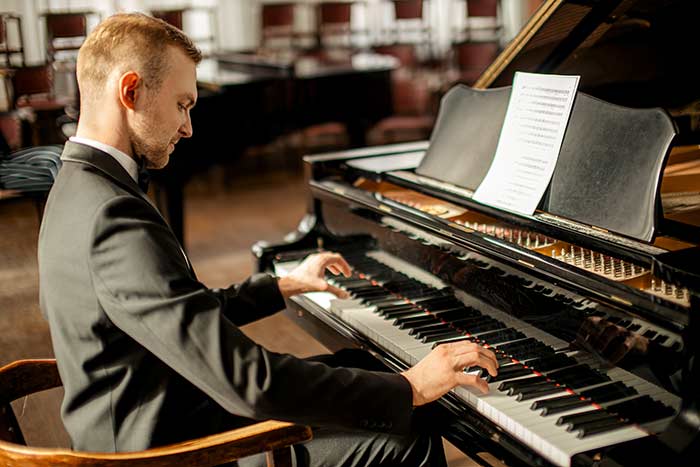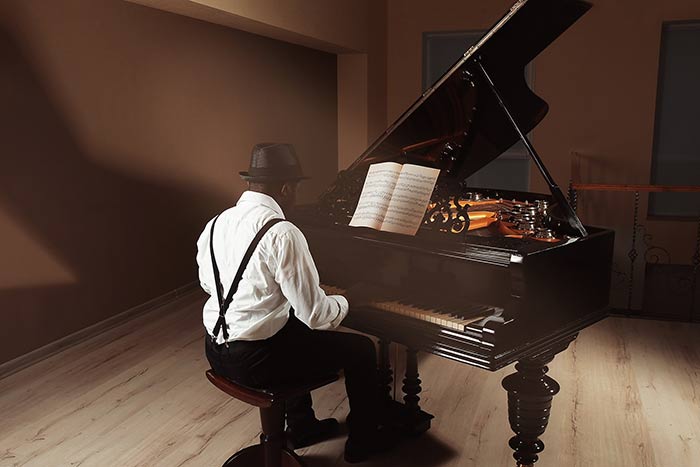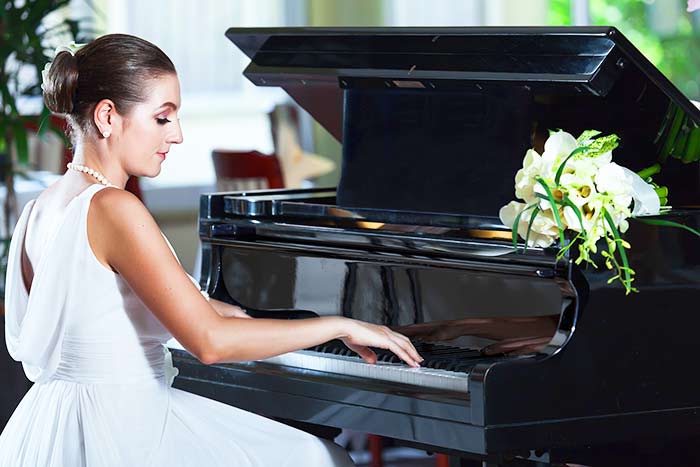When you tend to look at the how and why of things, you grow a deeper understanding and grow in knowledge. Nevertheless, whether you approach life with a deeper or shallow outlook, have you ever wondered how a piano works?
The Piano is considered one of the most intricate instruments in existence due to its many complex components, parts and pieces that make up the instrument. It is also one of the easiest instruments to start learning, due to getting a direct sound response when applying pressure to any of the keys- regardless of skill.
Most other instruments require specific methods to at least produce somewhat of a sound instead of a shrill or even nothing at all. Yet, although piano is easy to start learning, you will find that further along your musical journey there is much more to it than just pressing a key. Knowing how the instrument works is an incredibly beneficial way to truly play with understanding and deep emotion every time you decide to sit down.
Being able to play the piano is a real treasure. One that I believe every person must pursue should the opportunity arise. Let us take a closer look at the heart of this instrument and what makes it tick.
Background and History
The first piano ever created was done so by a man named Bartolomeo Cristofori around the year 1700. This era was called the Baroque, where the most popular instrument one could play was the harpsichord. Cristofori was quite a skilled and accredited Italian harpsichord maker.
In a nutshell, he took the harpsichord and made it ‘better’. By better I mean he made it easier for the player to control the dynamics, he gave it a wider range of keys and more.
Cristofori created an instrument where musicians can truly express themselves and have it reflect in the sound as well. The harpsichord made it difficult for musicians to live out the music and play it to its best potential since it is almost impossible to gradually shift in dynamics or change at all. Thus most Baroque pieces lack dynamic indication (p, mf, F etc.), exactly due to this very reason. So instead of being limited to playing only one level of volume, the piano allows us to switch between any level of volume with ease.
But what did Cristofori do to the piano to make such a big impact?
The harpsichord uses a plucking mechanism that usually consists of leather or quill. The strings are plucked which produces the well-known harpsichord sound. Since these strings are plucked, it limits the effective use of alternating between different dynamics such as soft or loud. Whereas the piano uses a hammer to strike the strings inside. It allows much more control over the volume. This improvement already makes an immense difference.
So How does a Piano Really Work?
The piano has a lot of moving parts. Thus, Whenever pressure is applied to a key, it sets off a bunch of movements within. Parts called the whippen, jack and repetition lever are the first to start moving. The whippen takes the pressure input and transforms it into a hammer strike. Then the hammer makes contact with the strings- making it vibrate- and this vibration resonates a loud sound. Not only does the soundboard vibrate, but the entire piano too! A damper rests on the strings to keep them from vibrating when a key is not played or is stopped playing. This damper is covered with felt to maximise the effect it already has.
Did you know that an average piano has about 230 strings in total? Most keys each have 3 strings. This is to increase the volume and enrich the sound quality. The higher keys have thinner strings than the lower notes, which are thicker. Length also has a role in this. The shorter the length of the string, the more high pitched the sound- and vice versa. Thus, the higher sounds are produced by the shortest and thinnest strings, while the thickest and longest strings produce the low pitched sounds.
Due to the piano using strings, it is classified as a Strings and Percussion instrument. Since the hammers inside hit the strings, it can therefore fall into the percussion instrument category. Yet the piano can be considered both a stringed and a percussion instrument.
Let us take a closer look at the pedals. An average modern piano nowadays only has 3 pedals. Namely the soft pedal, sostenuto pedal and the sustaining pedal. Each of these pedals play a significant role in how the sound is produced.
The soft pedal does exactly what it says. Holding it down allows for notes to be played much softer.
The sustain pedal removes the dampers that are resting on the string, making it possible for the note that is played to ring out for longer. It ‘sustains’ the sound. This pedal is also referred to as the damper pedal.
The sostenuto pedal which lies in the middle of the three is there to sustain a selected note or more. It allows a chord to be sustained whilst other notes sound like normal- preventing a smudgy sound.
How does a Digital Piano or Keyboard Work?
Both of these piano types mostly use recorded samples of an acoustic piano – or a variety of other instruments- and transmit that sound through their speakers every time a key is pressed. There are sensors that pick up the input of playing which results in sound flowing through either internal speakers or external ones plugged in. It involves a lot of computing and software for it to almost ‘mimic’ an acoustic piano.
To summarise all that has been said, whenever you press a key on an acoustic piano, it causes the hammer inside to hit the strings- producing a sound. There are different techniques you can apply for when pressing a key to produce a more fuller and richer sound which for sure has an impact on how it sounds.
Now that you know how a piano works, you can play with a deeper understanding and make it reflect in your playing style. There is no better sound than the one produced by a pianist that loves and knows their piano!










